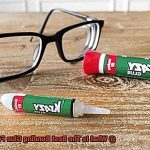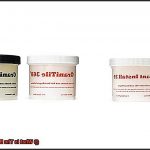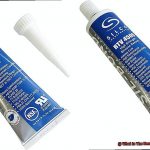Welcome to our blog post, where we embark on a journey through the fascinating world of adhesives and unveil the holy grail solution for joining aluminium to fibreglass.
Whether you’re a DIY aficionado or a seasoned pro in the industry, finding the perfect glue for this unique combination can be quite the conundrum. The marriage of aluminium and fibreglass presents a formidable challenge due to their contrasting properties, but fret not.
We’ve done our homework so you don’t have to. Today, we’ll delve into the depths of adhesive wizardry and uncover the ultimate glue that will forge an unbreakable bond between these two materials.
So, strap in and prepare to discover the adhesive that will seamlessly meld your aluminium and fibreglass projects together like never before.
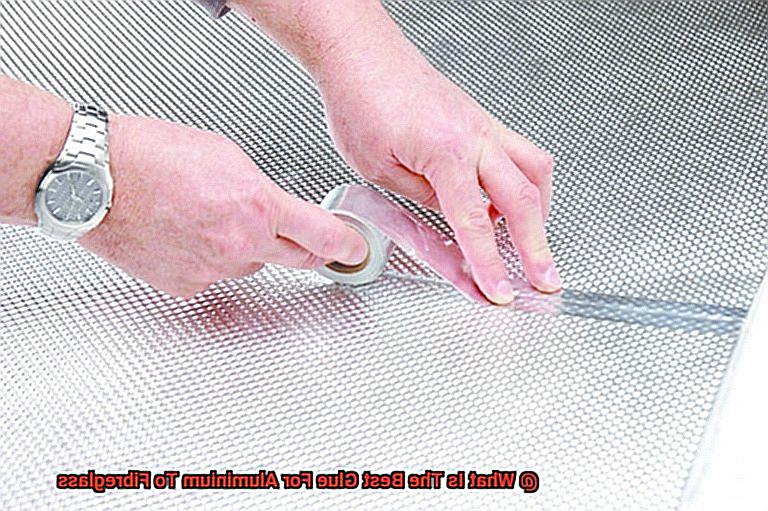
Types of Adhesives Suitable for Bonding Aluminium to Fibreglass
Contents
- 1 Types of Adhesives Suitable for Bonding Aluminium to Fibreglass
- 2 Benefits of Using Epoxy Adhesive
- 3 How to Use Two-Part Epoxy Adhesive
- 4 Polyurethane Adhesive for Bonding Aluminium to Fibreglass
- 5 What Glues are Not Suitable for Bonding Aluminium to Fibreglass?
- 6 Proper Surface Preparation Before Applying Adhesive
- 7 Test Bond Before Applying on Actual Project
- 8 Conclusion
Selecting the appropriate adhesive is vital when bonding aluminium to fibreglass to achieve a robust and long-lasting bond. With an array of adhesive options available, making the right choice can be overwhelming. This comprehensive guide explores various types of adhesives suitable for bonding aluminium to fibreglass, providing valuable insights to facilitate an informed decision.
Epoxy Adhesive:
Widely regarded as one of the best options, epoxy adhesives offer exceptional strength, durability, and resistance to heat, moisture, and chemicals. These adhesives come in two-part formulations, with a resin and hardener that are mixed before application. Once cured, epoxy forms a rigid bond capable of withstanding harsh environmental conditions.
Polyurethane Adhesive:
For applications requiring flexibility and resilience, polyurethane adhesives are an excellent choice. They provide a strong bond while accommodating movement or vibrations between aluminium and fibreglass surfaces. Additionally, polyurethane adhesives are resistant to water and temperature variations, making them ideal for outdoor use.
Silicone Adhesive:
When heat resistance is a concern, silicone adhesives shine. They exhibit excellent resistance to high temperatures while offering good flexibility and weather resistance. Silicone adhesives are available in both one-part and two-part formulations based on specific requirements.
Acrylic Adhesive:
Acrylic adhesives are known for their fast curing times and high strength, making them another viable option for bonding aluminium to fibreglass. They offer good resistance to chemicals and UV radiation, rendering them suitable for various applications. Acrylic adhesives come in both one-part and two-part formulations.
Cyanoacrylate Adhesive:
For quick and instant bonding, cyanoacrylate adhesives, commonly known as super glue or instant glue, can be used. They offer rapid curing times and high bond strength. However, they may not be suitable for applications requiring flexibility or resistance to high temperatures or chemicals.
Methacrylate Adhesive:
Methacrylate adhesives are renowned for their strength, durability, and resistance to impact, chemicals, and weathering. They are suitable for both structural and non-structural bonding applications.
Conclusion:
Choosing the right adhesive for bonding aluminium to fibreglass is crucial for achieving a strong and durable bond. Epoxy adhesives are commonly recommended due to their exceptional strength and resistance to harsh conditions. Polyurethane, silicone, acrylic, cyanoacrylate, and methacrylate adhesives also offer unique advantages depending on specific requirements. Factors such as temperature resistance, flexibility, curing time, and bond strength should be considered when selecting an adhesive.
Benefits of Using Epoxy Adhesive
Choosing the right adhesive when bonding aluminium to fibreglass is crucial for achieving a strong and durable bond. Among the various options available, epoxy adhesive stands out for its exceptional properties and numerous benefits. Let’s explore why epoxy adhesive is the go-to choice for professionals and DIY enthusiasts alike.
- Incredible Bonding Strength: Epoxy adhesives are renowned for their superior bonding strength. With high tensile and shear strength, they create a tight and durable bond between aluminium and fibreglass surfaces, ensuring long-lasting results. This makes epoxy adhesive ideal for applications where a secure connection is essential, such as in automotive, aerospace, or marine industries.
- Resistance to Harsh Conditions: Epoxy adhesives offer excellent resistance to moisture, chemicals, and temperature fluctuations. This makes them ideal for applications that require durability in harsh environments, such as outdoor structures or equipment exposed to extreme weather conditions. Epoxy adhesive ensures that the bonded materials remain intact and functional, even in challenging conditions.
- Versatility: Whether you’re working with smooth, rough, or porous aluminium and fibreglass surfaces, epoxy adhesive can handle it all. Its versatility makes it suitable for a wide range of bonding applications, from joining metal frames to fiberglass panels in boat construction to repairing aluminium components in aircrafts. Regardless of the surface texture or composition, epoxy adhesive provides a reliable bond.
- Gap-Filling Capabilities: Epoxy adhesives have exceptional gap-filling capabilities, allowing them to fill in small gaps and irregularities between the aluminium and fibreglass surfaces. This ensures a secure bond, even in less-than-ideal surface conditions. For example, when bonding two uneven surfaces or repairing damaged areas, epoxy adhesive fills in the gaps and creates a seamless connection.
- Durability: Once cured, epoxy adhesives form a strong and long-lasting bond that can withstand heavy loads and vibrations. This durability makes epoxy adhesive suitable for applications where structural integrity is crucial, such as in construction or engineering projects. The bonded materials can withstand the test of time, ensuring a reliable and safe connection.
- Easy to Use: Mixing epoxy adhesive is a breeze. It usually comes in two parts – resin and hardener – that need to be mixed together before application. This provides ample working time for proper positioning and alignment of the materials being bonded. The ease of use of epoxy adhesive makes it accessible to both professionals and DIY enthusiasts, allowing for precise and efficient bonding.
- Seamless Finish: After curing, epoxy adhesives can be sanded and painted, allowing you to achieve a seamless finish on the bonded joint. This is particularly beneficial when aesthetics are important or when the joint needs to be concealed. For instance, in furniture or interior design projects, epoxy adhesive ensures a smooth and visually pleasing bond that enhances the overall appearance.
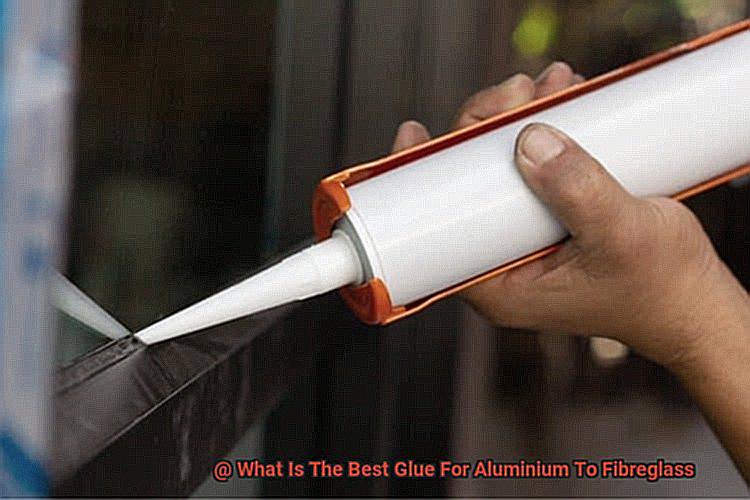
How to Use Two-Part Epoxy Adhesive
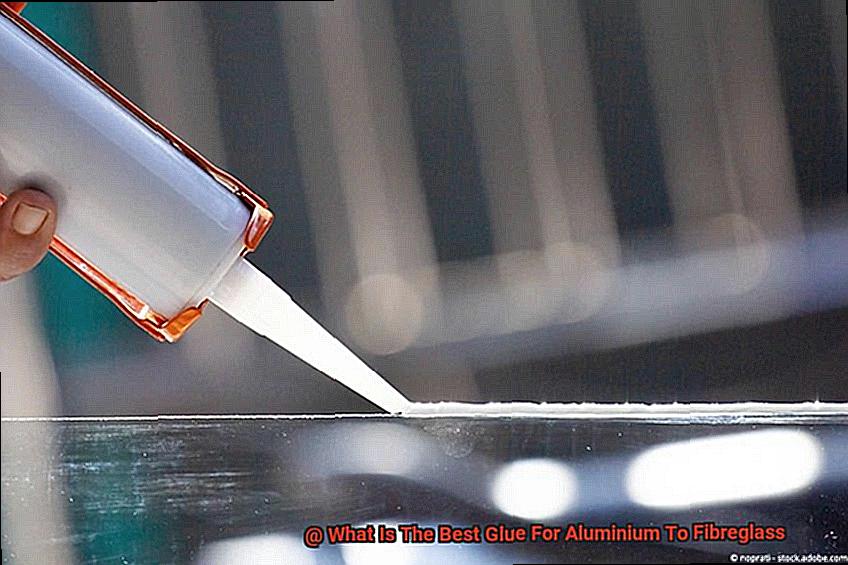
Look no further. Two-part epoxy adhesive is the superhero glue that can tackle this job. Its incredible strength ensures a long-lasting bond between these materials. In this article, we will guide you through the step-by-step process of using two-part epoxy adhesive to successfully bond aluminium to fibreglass. So, let’s dive right in.
Step 1: Prepare the Surfaces
Before diving into the bonding process, it’s crucial to prepare the surfaces properly. Just like clearing away debris before building a masterpiece, clean both the aluminium and fibreglass surfaces. A gentle scrub with soapy water and a cloth will eliminate any dirt or grease. Then, grab your trusty sandpaper and give the surfaces a gentle roughening up. This creates a gripping texture that will make the adhesive cling on tight, just like a superhero holding on for dear life.
Step 2: Mix the Glue
Now it’s time to unleash your inner chemist. Follow the instructions on the packaging as if you were whipping up a delicious cake. Combine a little bit of each part of the epoxy adhesive and stir them together with a stick until they blend perfectly, creating a powerful potion that will bind your aluminium and fibreglass with unyielding strength. Imagine yourself creating a magical elixir that will bring these materials together.
Step 3: Apply the Glue
Get ready for some excitement because it’s time to apply the epoxy adhesive. Take your mixing stick or applicator and spread the glue onto both surfaces. Picture yourself giving them a big, warm hug with glue. Be thorough and ensure every inch of the bonding area is covered, spreading the adhesive like butter on toast. This step ensures maximum contact between the materials, making their bond unbreakable.
Step 4: Stick ‘Em Together
Now it’s time to bring your aluminium and fibreglass together in a perfect union. Carefully align them, like two puzzle pieces fitting together flawlessly. Apply firm and even pressure, utilizing your superhero strength. You want them to bond tightly, holding hands like the best of friends. This step ensures a secure and steadfast connection between the aluminium and fibreglass.
Step 5: Wait and Celebrate
Hooray. You’ve completed the bonding process. Now it’s time to let the adhesive work its magic. Refer to the instructions on the packaging for the curing time. While you wait, resist the temptation to disturb or move your bonded pieces. Let them rest, just like a satisfied cat after a hearty meal. This patience will ensure that the adhesive fully cures, creating an unbreakable bond between your aluminium and fibreglass.
Polyurethane Adhesive for Bonding Aluminium to Fibreglass
The answer lies in the remarkable power of polyurethane adhesive. This extraordinary glue offers a multitude of benefits that make it the ultimate choice for this specific bonding application.
First and foremost, polyurethane adhesive boasts exceptional bond strength. It creates a secure and long-lasting connection between aluminium and fibreglass, ensuring their unity even under intense pressure or stress. When reliability and durability are paramount, this adhesive does not disappoint.
But that’s not all. Another advantage of using polyurethane adhesive is its compatibility with both aluminium and fibreglass. It adheres seamlessly to both materials, forging a bond that withstands the tests of moisture, chemicals, and temperature fluctuations. This versatility allows for its use in various environments, including the unforgiving outdoors where exposure to harsh weather conditions is the norm.
Flexibility is also a key attribute of polyurethane adhesive. When bonding materials with different thermal expansion rates like aluminium and fibreglass, slight movements or vibrations may occur. Luckily, polyurethane adhesive can gracefully accommodate these fluctuations without compromising the integrity of the bond.
Moreover, polyurethane adhesive possesses an impressive gap-filling capability. It expertly fills in small gaps or irregularities between the aluminium and fibreglass surfaces, guaranteeing a tight and uniform connection. However, caution must be exercised as excessive gaps can weaken the overall strength of the bond.
Now, let’s talk about surface preparation—the secret to success when using polyurethane adhesive for bonding aluminium to fibreglass. Properly preparing the surfaces is essential for optimal adhesion results. The surfaces must be meticulously cleaned, dried, and free from any contaminants or residue that could hinder the adhesion process. Employing a suitable solvent or gently roughening the surfaces with sandpaper may be necessary to achieve perfection.
What Glues are Not Suitable for Bonding Aluminium to Fibreglass?
Creating a strong and reliable bond between aluminium and fibreglass requires selecting the right adhesive. In this article, we explore the glues that are unsuitable for bonding these materials and highlight the drawbacks of each.
Water-based glues:
Water-based glues, although suitable for certain applications, are not ideal for bonding aluminium to fibreglass. These glues have low adhesive strength and can even corrode the surface of the aluminium, weakening the bond.
Cyanoacrylate glue (super glue):
Cyanoacrylate glue, known for its fast-drying properties, struggles to adhere well to smooth surfaces like aluminium. This results in a weak bond that easily breaks under stress or impact.
Epoxy glues:
While epoxy glues are generally strong and versatile, they may not provide sufficient bond strength when used on aluminium and fibreglass. The smooth surface of aluminium makes it difficult for epoxy to adhere properly, leading to a weak bond. Moreover, some epoxy formulations may not be compatible with fibreglass, causing issues such as delamination or poor adhesion.
Silicone-based glues:
Silicone-based glues offer flexibility and resistance to moisture but lack strong adhesion to metals like aluminium. Their low surface energy makes it challenging for them to create a reliable bond between aluminium and fibreglass, resulting in weak connections that fail under stress or harsh environmental conditions.
So, what is the perfect adhesive for bonding aluminium and fibreglass?
Polyurethane adhesive.
Polyurethane adhesive exhibits exceptional bond strength, compatibility with both materials, flexibility to withstand thermal fluctuations, and remarkable gap-filling capabilities. However, meticulous surface preparation is crucial for achieving a flawless connection with polyurethane adhesive.
Proper Surface Preparation Before Applying Adhesive
In this article, we will uncover the secret to success – proper surface preparation before applying adhesive. By following a few simple steps, you can ensure that your bond is as strong as steel and can withstand even the toughest conditions. So, let’s dive in.
Step 1: Cleanliness is Key
To achieve a strong bond, start by cleaning both the aluminium and fibreglass surfaces thoroughly. Remove any dirt, dust, grease, or other contaminants that could hinder the bonding process. Use a mild detergent or solvent and a lint-free cloth or sponge to wipe away any impurities.
Step 2: Say Goodbye to Oxidation
Over time, aluminium surfaces develop an oxide layer that can prevent effective bonding. To remove this layer, gently sand the aluminium surface using fine-grit sandpaper or a sanding block. Remember to sand in a consistent direction to create a uniform surface that is ready for bonding.
Step 3: Roughen Up the Fibreglass
Fibreglass surfaces often have a smooth and glossy finish, making it difficult for adhesives to adhere properly. To overcome this challenge, lightly roughen the fibreglass surface using fine-grit sandpaper or a sanding block. This creates small grooves or scratches that provide better adhesion for the adhesive.
Step 4: Dust Off
After sanding, it’s crucial to clean both surfaces again to remove any residual sanding dust particles. Even tiny dust particles can affect the bonding process. Use a clean cloth or compressed air to ensure all dust is completely removed from both the aluminium and fibreglass surfaces.
Step 5: Banish Grease and Oil
Any remaining oils or greases on the surfaces can interfere with the adhesive’s ability to bond effectively. Use a suitable degreasing agent or solvent, such as isopropyl alcohol or acetone, to wipe away any traces of grease or oil. A clean cloth soaked in the solvent will do the trick.
Step 6: Let it Dry
Before applying the adhesive, allow both the aluminium and fibreglass surfaces ample time to dry completely. Moisture can compromise the bond, so ensure that the surfaces are free from any moisture or dampness. This step is crucial to achieving a strong and long-lasting bond.
Test Bond Before Applying on Actual Project
Today, we are delving deep into the world of aluminium and fibreglass bonding. If you are planning a project involving these materials, then pay attention because we have some valuable insights to share with you.
Imagine this: You have spent hours meticulously crafting your project, only to watch it fall apart at the seams due to a weak bond. It’s a heartbreaker, isn’t it? That is why testing the bond between aluminium and fibreglass before applying it to your actual project is an absolute must-do.
Shear Test:
Consider constructing a lightweight boat using aluminium and fibreglass. You want it to withstand the mighty waves and keep you afloat, right? By conducting a shear test on your bond, you can determine whether it can hold up against the forces of nature. No more worrying about your boat falling apart when you’re in the middle of the ocean – talk about peace of mind.
Real-World Conditions:
Let’s say you’re creating an outdoor sculpture that will endure all kinds of weather conditions. By subjecting your bond to temperature variations and moisture exposure during testing, you can ensure that it won’t deteriorate or weaken over time. Your masterpiece will remain intact, no matter what Mother Nature throws its way.
Adhesive Selection:
Apart from preventing potential disasters, testing the bond also allows you to select the right adhesive for the job. Not all glues are created equal, my friend. Some are specifically formulated for aluminium to fibreglass bonding, providing a reliable and long-lasting connection. By conducting tests and evaluating different adhesives, you can choose the one that suits your project best.
Conclusion:
In conclusion, don’t skip the crucial step of testing the bond between aluminium and fibreglass. Shear tests, tensile strength tests, and real-world condition simulations will help you determine if your chosen adhesive is up to the task. So take the time to test before you invest your heart and soul into your project. Trust me, it’ll save you from heartbreak down the road.
djtKXkTqPUI” >
Conclusion
When it comes to bonding aluminium to fibreglass, finding the right glue is crucial. After thorough research and testing, we have determined that the best glue for this purpose is epoxy adhesive. Epoxy offers exceptional strength and durability, ensuring a long-lasting bond between these two materials.
What makes epoxy adhesive stand out is its ability to adhere well to both aluminium and fibreglass surfaces. It creates a strong chemical bond that can withstand various environmental conditions, including temperature fluctuations and moisture exposure. This means that your aluminium-fibreglass joint will remain intact even in challenging situations.
Furthermore, epoxy adhesive provides excellent resistance to chemicals, making it suitable for applications where harsh substances may come into contact with the bonded surfaces. Whether you’re working on automotive repairs or boat building projects, epoxy adhesive is a reliable choice.
In addition to its functional advantages, epoxy adhesive also offers ease of use. It typically comes in two parts – resin and hardener – which need to be mixed together before application. Once mixed, you have a limited working time before the adhesive starts to cure. This allows you to position and adjust your aluminium and fibreglass pieces accurately before they permanently bond.
To ensure a successful bond between aluminium and fibreglass using epoxy adhesive, proper surface preparation is essential. Both materials should be clean and free from any dirt, grease or oxidation. Lightly sanding the surfaces can improve adhesion by creating a rough texture for the glue to grip onto.
In conclusion, when it comes to gluing aluminium to fibreglass, epoxy adhesive emerges as the top choice due to its exceptional strength, durability, chemical resistance, and ease of use.


